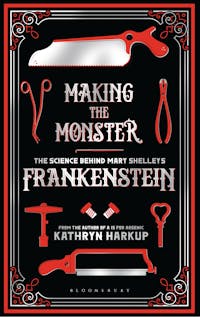Making the Monster
The Science Behind Mary Shelley's Frankenstein
 Download image
Download image
ISBN10: 1472933737
ISBN13: 9781472933737
Hardcover
304 Pages
$27.00
CA$36.00
The year 1818 saw the publication of one of the most influential science-fiction stories of all time. Frankenstein: Or, Modern Prometheus by Mary Shelley had a huge impact on gothic horror and science fiction genres. The name Frankenstein has become part of our everyday language, often used in derogatory terms to describe scientists who have overstepped a perceived moral line. But how did a 19-year-old woman with no formal education come up with the idea for an extraordinary novel such as Frankenstein? The period of 1790–1820 saw huge advances in our understanding of electricity and physiology. Sensational science demonstrations caught the imagination of the general public, and newspapers were full of tales of murderers and resurrectionists.
It is unlikely that Frankenstein would have been successful in his attempts to create life back in 1818. However, advances in medical science mean we have overcome many of the stumbling blocks that would have thwarted his ambition. We can resuscitate people using defibrillators, save lives using blood transfusions, and prolong life through organ transplants—these procedures are nowadays considered almost routine. Many of these modern achievements are a direct result of 19th century scientists conducting their gruesome experiments on the dead.
Making the Monster explores the science behind Shelley's book. From tales of reanimated zombie kittens to electrical experiments on human cadavers, Kathryn Harkup examines the science and scientists that influenced Mary Shelley and inspired her most famous creation, Victor Frankenstein. While, thankfully, we are still far from being able to recreate Victor's "creature," scientists have tried to create the building blocks of life, and the dream of creating life-forms from scratch is now tantalizingly close.
Reviews
Praise for Making the Monster
"Lucidly illuminates Shelley's investment in the rapidly expanding knowledge of chemistry, biology, and electricity of her times, and reminds us of how "Frankenstein" helped inspire technological developments, such as the pacemaker."—The Wall Street Journal

